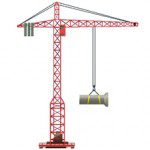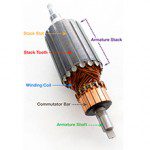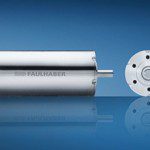A servo system is one in which the system’s error (in position, speed, or torque) is corrected through the use of a feedback device that compares the system’s actual performance with its commanded performance. What makes a motor a servo motor, then, has less to do with its construction and operation, and more to do […]
DC motor
Best DC motors for high starting torque?
A DC motor can be constructed in various ways, and each design has specific performance characteristics, particularly regarding speed and torque production. The rotor is basically the same in all DC motors, being made of windings that generate an electromagnetic field when current passes through them. But the stator can be made of either permanent magnets […]
What is a commutator?
The operating principle of a DC motor is based on the interaction between the magnetic field of a rotating armature and the magnetic field of a fixed stator. As the north pole of the armature is attracted to the south pole of the stator (and vice-versa), a force is produced on the armature, causing it […]
FAQ: What are DC shunt motors and where are they used?
In electrical terminology, a parallel circuit is often referred to as a shunt. Hence, DC motors in which the armature and field windings are connected in parallel are referred to as DC shunt motors. The variations in construction between series-wound DC motors and DC shunt motors result in some differences in operation between the two types, but […]
What’s the relationship between current and dc motor output torque?
Torque is a rotational force produced when a vertical force is applied at some distance from the center axis of the rotating body. The familiar equation for torque is: Where: T = torque F = applied vertical force d = distance from axis of rotation In a DC motor, the output torque is directly proportional to the […]
The relationship between voltage and dc motor output speed
The operation of a DC motor is relatively straightforward. A coil is placed in a magnetic field, and when an electric current passes through the coil, a torque is produced, causing the motor to turn. The entire process is driven by applying electrical power to the coil, with the source voltage having a direct relationship […]







